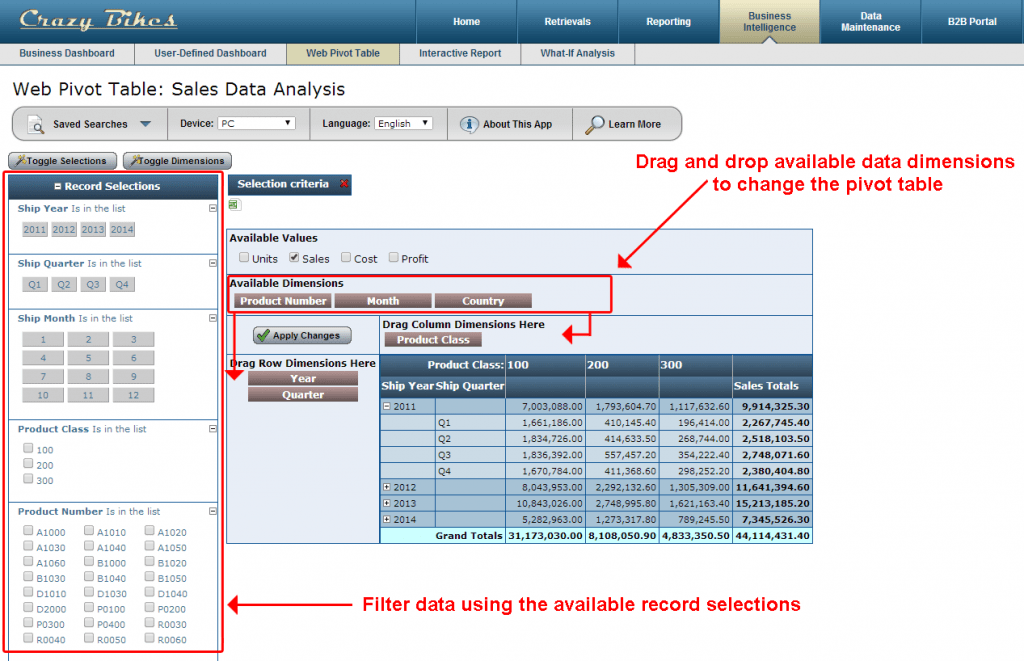 Summary: Commonly found in spreadsheet programs (like Excel) pivot tables are a staple of modern business reporting. But, are spreadsheets really the best choice for pivot tables? In this article, you’ll learn why they aren’t, and why the web is a better option.
Summary: Commonly found in spreadsheet programs (like Excel) pivot tables are a staple of modern business reporting. But, are spreadsheets really the best choice for pivot tables? In this article, you’ll learn why they aren’t, and why the web is a better option.
Used regularly in business, pivot tables are interactive tables that automatically extract, organize, and summarize data. They let users quickly examine nearly any aspect of their data, make comparisons, and discover trends.
Typically found in spreadsheet programs (like Excel), pivot tables play a large role in business reporting across the world. In many companies, users spend hours every week creating and distributing pivot tables in Excel.
However, while pivot table reporting is almost synonymous with Excel, is it really the right tool for the job?
No…and I’ll tell you why. Here are three reasons why pivot tables are better on the web:
1. Simplicity
Creating pivot tables in Excel is a manual process, especially when creating pivot tables for multiple user levels. For instance, if you must create a sales pivot table for salespeople and managers, every user might need to see different data. The salespeople only need access to their territories, while managers need larger data sets.
In Excel, this requires that you create different pivot tables for different users–a time-consuming and manual process. However, moving those pivot tables to the web simplifies the process. It lets you create a single pivot table, using role-based (or multi-tenant) security to ensure that each user only sees the data they are supposed to see.
2. Security
Spreadsheet distribution is incredibly insecure–usually involving email. The problem is, once emailed, you lose control over that pivot table. You don’t know who emails it to whom or who accesses it.
When moved to the web, you control data and user access. You can place your spreadsheets behind a secure sign-on screen, giving you the ability to monitor and control which users access the pivot table.
3. Access
When placed on the web, users can access the pivot tables from anywhere–even mobile devices! They’ll no longer need to worry about accidentally leaving the file on their work computer, or forgetting to email a copy to themselves. On the web, it’s accessible from any web-connected device.

Demo of a web-based pivot table
To see a demo of a web-based pivot table in action, check out this application. Notice that it lets you adjust the available dimensions just like you would in a spreadsheet, drill down to lower levels of information, and even lets you filter the data using the record selections on the left.
Of course, if you’d like to build web pivot tables for your company, you should check out m-Power. It lets you build all types of web applications (including pivot tables) without programming. To try it for yourself, just sign up for a free trial.